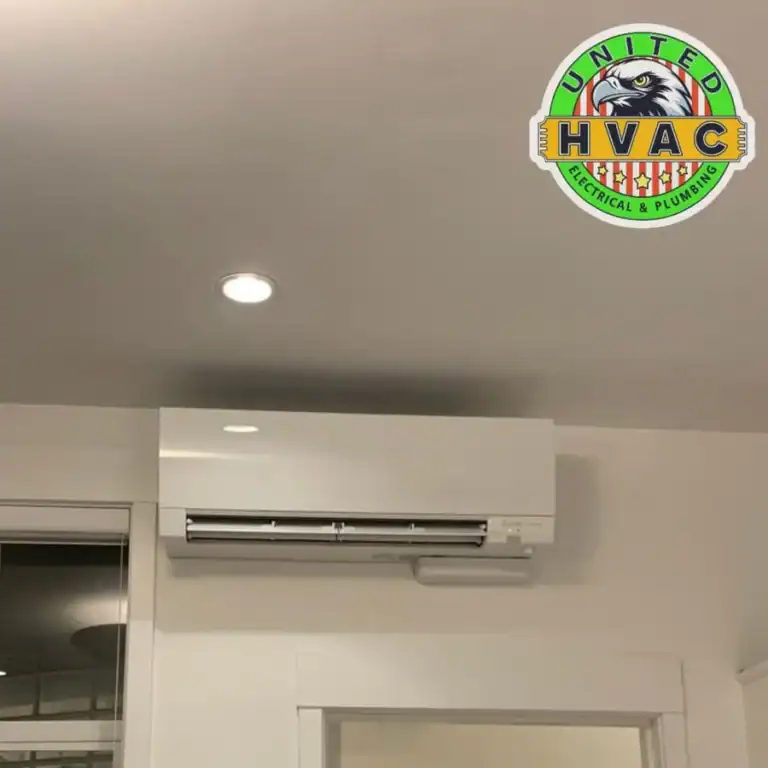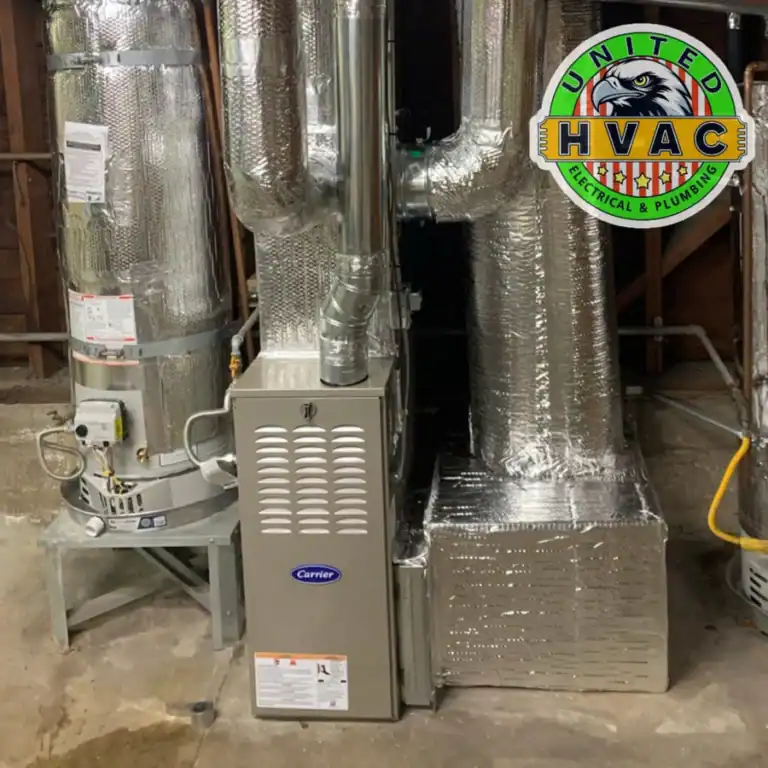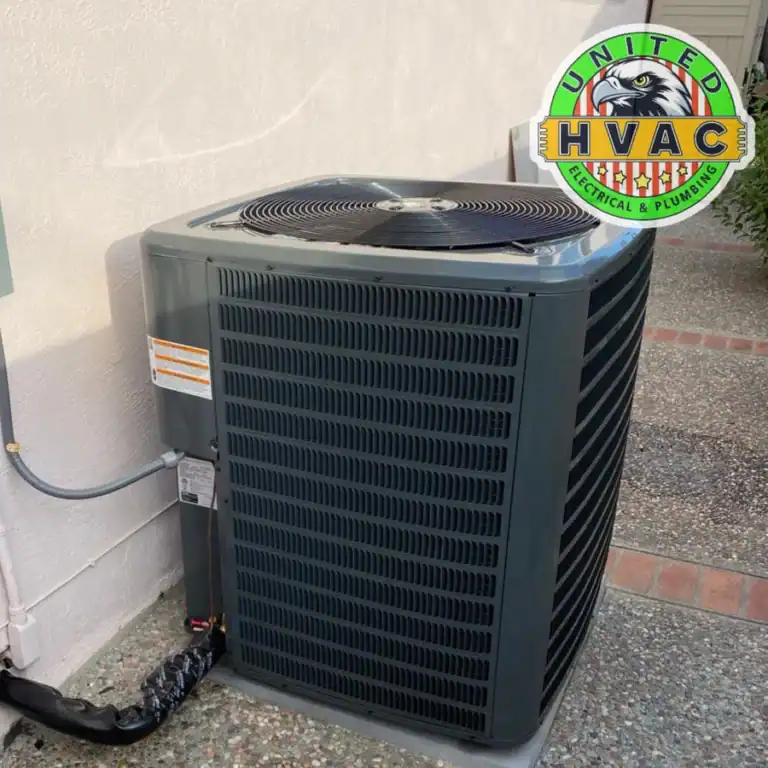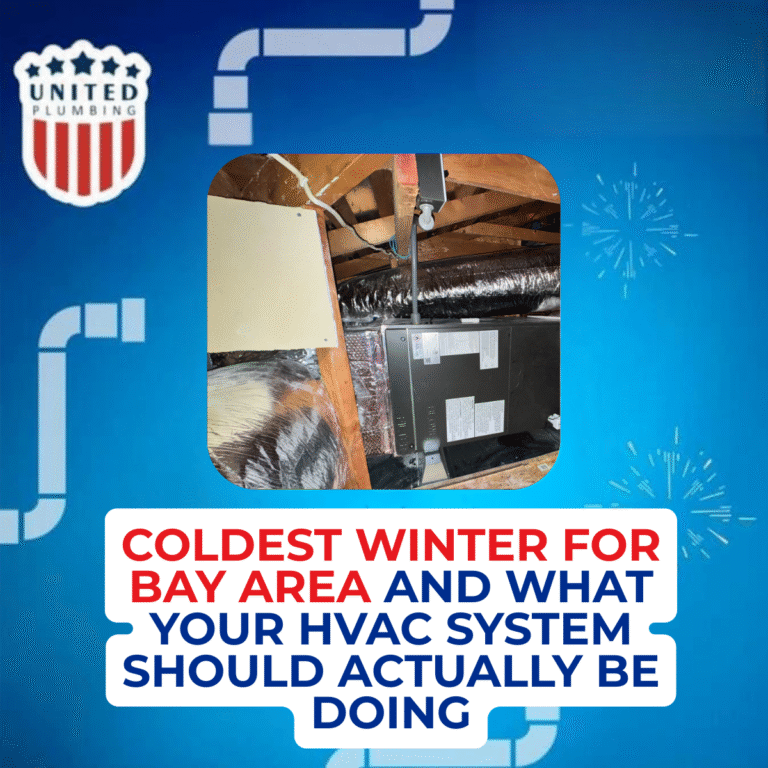FIVE-STAR TEAM WARRANTY &
SAME-DAY SERVICE
What Is HVAC? Meaning, System Components, and How It Works
Ever turned on your heater on a chilly San Jose morning and wondered about the magic happening behind the walls? Understanding what hvac means can help homeowners make smarter choices about their comfort systems. The hvac system in most homes represents one of the biggest energy users and comfort providers, yet remains surprisingly mysterious to many property owners. This guide breaks down hvac systems, their components, and operation in plain English.
What Does HVAC Stand For?
HVAC Definition and Meaning
HVAC stands for Heating, Ventilation, and Air Conditioning – three functions wrapped into one system that keeps homes comfortable year-round. The hvac definition covers both the physical equipment and the whole industry dedicated to indoor climate control. When someone mentions “HVAC,” they’re talking about the complete package that handles warming, cooling, and air quality.
Common Uses of the Term in the Industry
The term pops up everywhere in home services. Contractors talk about “HVAC installation” when putting in new systems. Service folks discuss “HVAC maintenance” during tune-ups. Builders coordinate “HVAC plans” during construction. The abbreviation saves breath while encompassing the entire comfort system – much easier than saying “heating, ventilation, and air conditioning” repeatedly during conversations.
When Did HVAC Become Standard in Homes?
Grandma’s house probably didn’t have central air. Home heating dates back centuries, but complete hvac systems only became mainstream after World War II. The post-war housing boom of the 1950s introduced affordable air conditioning, though it remained a luxury for many. By the 1970s, new tract homes commonly included central air systems. Today’s buyers practically expect them – try selling a California home without AC!
What Is an HVAC System and How It Works
Think of an HVAC system as the lungs and circulatory system of a house – it breathes in air, conditions it, and distributes comfort throughout living spaces.
Main Components of an HVAC System
Understanding what is an hvac system requires knowing its basic parts:
Heating Unit: Usually a furnace (using gas, oil, or electricity) or a heat pump that warms air during winter.
Cooling Unit: Typically an air conditioner or heat pump that removes heat and humidity during summer.
Air Handler: The workhorse that moves air through the system – contains the blower fan that pushes conditioned air into rooms.
Thermostat: The brain of the system – tells everything when to turn on and off based on temperature settings.
Ductwork: The highway system for air – metal pathways hidden in walls, floors and ceilings that carry conditioned air.
Ventilation Components: Include exhaust fans, fresh air intakes, and devices that exchange stale indoor air with fresh outdoor air.
Filters: The system’s lungs – trap dust, allergens, and particles to keep air cleaner.
Each piece must work in harmony for the whole system to function effectively.

Split System HVAC vs. Packaged Systems
Most San Jose homes use split system hvac designs, where equipment divides between indoors and outdoors. The furnace and air handler typically hide in a closet, attic or basement, while the AC condenser (that big metal box making noise) sits outside. This arrangement keeps noisy components outdoors and saves space.
Packaged systems cram everything into one outdoor cabinet – imagine a large metal box containing both heating and cooling equipment. These work well for homes without basements or crawlspaces, or properties where indoor mechanical space comes at a premium.
HVAC System Diagram
Looking at an hvac system diagram helps visualize how everything connects:
[Here would be an hvac system diagram showing components and airflow paths]
The diagram shows how air travels a continuous loop from rooms through return vents, into the HVAC equipment for conditioning, then back through supply vents into living spaces. Understanding this circular journey helps homeowners grasp how their comfort systems actually work.
Types of HVAC Systems
Not all HVAC systems are created equal – different buildings need different solutions.
Residential vs. Commercial HVAC
Home systems differ dramatically from those serving businesses. Residential hvac systems typically handle smaller spaces, prioritize quiet operation, and blend visually with living environments. They generally use simpler controls and smaller equipment designed for consistent, long-term operation.
Commercial systems must handle larger spaces, varying occupancy levels, and often complex zoning requirements. They typically mount on rooftops to save valuable indoor real estate and offer easier service access. The equipment runs larger, louder, and includes more sophisticated controls than residential units.
Central vs. Ductless Split Systems
Traditional central systems push air through ducts to every room – great for whole-house comfort but requiring significant installation space. They provide consistent temperatures throughout the home but can lose efficiency through leaky ductwork.
Ductless split systems (mini-splits) bypass ductwork entirely, connecting outdoor units directly to wall-mounted indoor blowers. These systems offer room-by-room temperature control, work well for home additions, and save energy by eliminating duct losses. The tradeoff? Higher upfront costs and multiple components visible in living spaces.

Choosing the Best HVAC System for Your Needs
Finding the best hvac system means considering several practical factors:
- Home size and layout
- Climate patterns in your specific area
- Energy costs and efficiency goals
- Budget constraints (both upfront and long-term)
- Indoor air quality concerns
United HVAC, Plumbing & Electrical helps San Jose homeowners navigate these choices during in-home consultations. Their technicians evaluate specific property needs rather than pushing universal solutions. This customized approach ensures homeowners get systems that actually match their comfort requirements.
HVAC Installation, Maintenance, and Replacement
Like cars, HVAC systems need proper installation, regular upkeep, and eventual replacement when parts wear out.
How HVAC Installation Works
Professional hvac installation involves more than just dropping in equipment:
- Sizing calculations to determine the right capacity for the space
- Equipment selection based on home needs and budget
- Planning for component placement and connections
- Installing or modifying ductwork
- Running refrigerant lines and electrical connections
- System charging and calibration
- Performance testing under actual conditions
Quality hvac system installation requires training and specialized tools. While DIY videos make it look simple, professional installation ensures safety, efficiency, and warranty protection.
Importance of HVAC Maintenance and Inspection
Regular hvac maintenance resembles dental checkups – preventive care that catches small issues before they become painful and expensive. Seasonal tune-ups typically include:
- Cleaning or replacing filters
- Checking refrigerant levels
- Inspecting electrical connections
- Lubricating moving parts
- Cleaning coils and drain lines
- Testing safety controls
- Checking thermostat operation
United HVAC, Plumbing & Electrical recommends maintenance visits before heavy-use seasons – spring for cooling systems and fall for heating equipment. Their maintenance plans include these comprehensive checks to prevent sudden breakdowns during weather extremes.

Signs You Need HVAC Replacement
When does repair no longer make sense? Watch for these hvac replacement indicators:
- System age over 15 years
- Frequent repairs adding up
- Rising energy bills despite maintenance
- Inconsistent temperatures throughout the home
- Unusual noises or operating patterns
- Refrigerant leaks (especially with older R-22 systems)
New systems offer substantial efficiency improvements that often pay for themselves through energy savings. United HVAC, Plumbing & Electrical helps homeowners compare repair costs against replacement benefits to make financially sound decisions.
Who Works on HVAC Systems?
Behind every comfortable home stands trained professionals keeping systems running smoothly.
What an HVAC Technician Does
An hvac technician isn’t just a parts-swapper – they’re skilled diagnosticians who:
- Install new systems according to manufacturer specifications
- Troubleshoot complex problems using specialized testing equipment
- Repair or replace failing components
- Perform preventive maintenance to extend system life
- Ensure safe operation and code compliance
- Optimize systems for efficiency and performance
These professionals typically complete technical schooling, apprenticeships, and certification programs before working independently on home systems.
Choosing a Reliable HVAC Company
Finding a trustworthy hvac company involves looking beyond just price:
- Proper licensing and insurance
- Technician certifications and ongoing training
- Company history in the community
- Customer reviews from multiple sources
- Clear, upfront pricing practices
- Warranties on both parts and labor
- Availability when you actually need service
United HVAC, Plumbing & Electrical meets these criteria with licensed professionals, decades serving the San Jose area, and straightforward business practices. Their year-round availability ensures homeowners never face extended discomfort waiting for service.

Equipment and Tools Used by Technicians
Professional hvac equipment goes far beyond basic hand tools:
- Digital manifold gauges measuring system pressures
- Electronic leak detectors finding invisible refrigerant escapes
- Thermal imaging cameras showing temperature patterns
- Digital multimeters testing electrical components
- Recovery machines safely capturing refrigerants
- Vacuum pumps removing moisture from refrigerant lines
This specialized equipment allows proper diagnosis and repair that DIY approaches simply cannot match. United HVAC, Plumbing & Electrical technicians arrive with fully-equipped service vehicles containing both tools and common parts to complete most repairs in one visit.
Conclusion
Understanding what is hvac helps homeowners make smarter decisions about these expensive but essential home systems. From routine maintenance to eventual replacement, informed homeowners can partner effectively with professionals to maintain comfortable, efficient indoor environments.
For San Jose residents, United HVAC, Plumbing & Electrical provides comprehensive services from troubleshooting to complete system installation. Their experienced technicians deliver solutions tailored to each home’s specific needs, ensuring optimal comfort regardless of outside weather conditions.
Post views: 1493
FAQs
What does HVAC stand for in simple terms?
HVAC stands for Heating, Ventilation, and Air Conditioning – essentially everything related to indoor temperature control and air quality. It’s the complete system keeping homes comfortable year-round, not just the air conditioner.
Is HVAC good for money?
As a career, HVAC offers excellent income potential with relatively short training periods. For homeowners, investing in quality HVAC equipment typically delivers good returns through improved comfort, lower energy bills, and increased property value.
What is the difference between AC and HVAC?
AC (air conditioning) refers specifically to cooling equipment, while HVAC encompasses the entire climate control system including heating, ventilation, and cooling. AC is just one component within a complete HVAC system.
Does HVAC use gas or electricity?
Many HVAC systems use both. Furnaces typically burn natural gas or propane for heating, while air conditioners run on electricity. Some homes use electricity exclusively with heat pumps or electric furnaces, while others combine gas heating with electric cooling.
Latest posts

Coldest winter for Bay Area in 2025 And What Your HVAC System Should Actually Be Doing
If your home feels colder than usual this winter, you’re not imagining it. Bay Area home heating systems are being...

Prevent Clogged Faucets: 10 Tips for Homeowners in 2025
Clogged faucets are one of the most common service calls we handle in California homes, and the good news is that...


If you still have questions or need advice, please leave a request and we will contact you as soon as possible
Need a plumber and got no clue where to start?
(408) 539-6936Facing a plumbing issue? Get a FREE in-person estimate and quick solutions from our skilled technicians, ensuring your home runs smoothly again!
